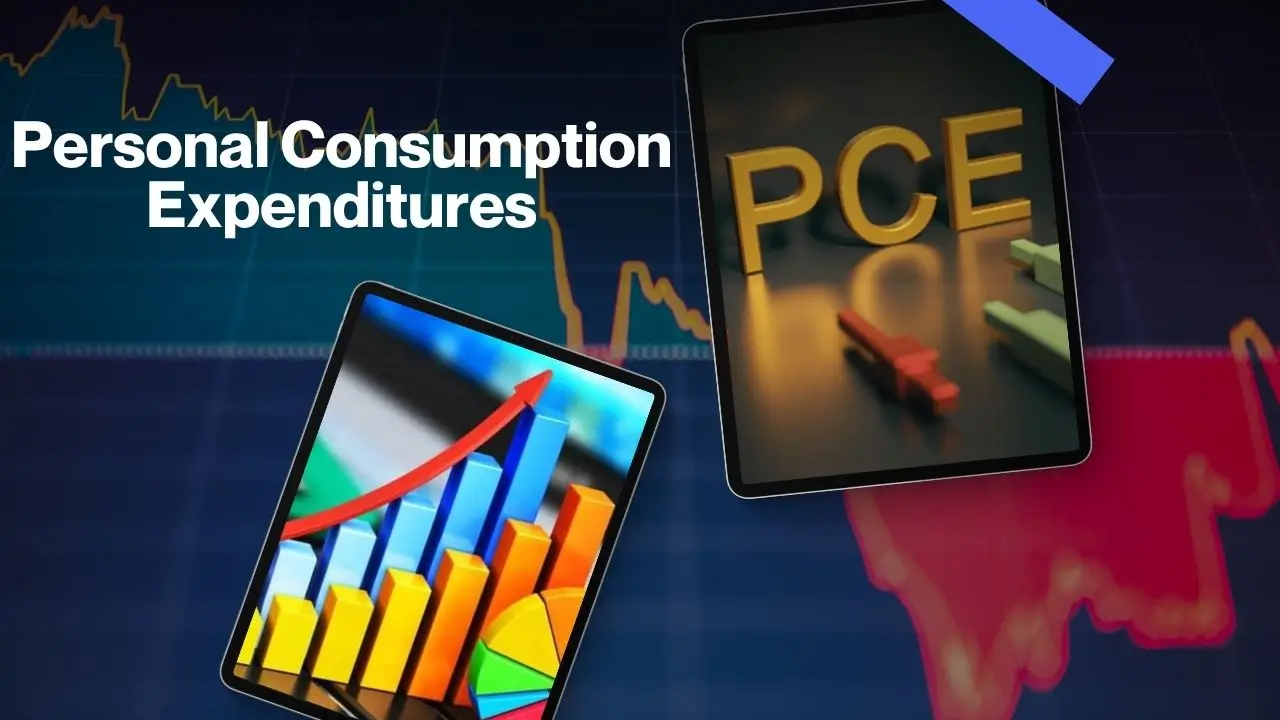Share
PCE Index – The Fed’s Favorite Inflation Gauge Explained
21 tháng 10 2025
The Personal Consumption Expenditures (PCE) Index is the Federal Reserve’s preferred measure of inflation, offering a broader and more accurate reflection of price pressures in the U.S. economy. Discover why the Fed favors PCE over CPI and how it influences interest rates, gold, stocks, and Bitcoin.

PCE – The Inflation Gauge That Holds the Fed’s Trust
Among the flood of U.S. economic indicators released every month, the Personal Consumption Expenditures (PCE) Price Index stands out as a crucial data point. It is often referred to as the Federal Reserve’s favorite inflation gauge.
While the Consumer Price Index (CPI) tends to grab more media attention, the Fed views PCE as a more comprehensive and realistic measure of underlying price trends — a key factor in shaping U.S. monetary policy.
What Does PCE Measure, and How Is It Different from CPI?
Both CPI and PCE track changes in the prices of goods and services purchased by consumers, but they differ in methodology and scope.
- CPI (Consumer Price Index) measures price changes in a fixed basket of goods and services directly purchased by consumers. It is published by the Bureau of Labor Statistics (BLS).
- PCE, on the other hand, is produced by the Bureau of Economic Analysis (BEA) and reflects actual expenditures made on behalf of consumers — including those paid by employers, insurers, or the government.
This means PCE better captures substitution effects — when consumers switch to cheaper alternatives as prices rise — making it a more adaptive and accurate measure of real-world inflation dynamics.
Two Types of PCE: Headline and Core
Economists and investors typically focus on two versions of the PCE:
1. Headline PCE:
Includes all categories of goods and services, including volatile food and energy prices.
2. Core PCE:
Excludes food and energy to highlight underlying, long-term inflation trends — this is the version most closely tracked by the Federal Reserve when determining interest rate decisions.
Why the Fed Prefers PCE over CPI
The Federal Reserve favors PCE for three key reasons:
1. Broader Coverage:
PCE accounts for spending by businesses, non-profits, and government programs on behalf of consumers, such as health insurance — providing a more complete picture of the economy.
2. Behavioral Accuracy:
PCE adjusts for changes in consumer behavior, capturing real-world substitution between goods and services — a dynamic CPI misses.
3. Integrated with GDP Data:
Because PCE is part of the U.S. national accounts, it aligns directly with nominal GDP, giving policymakers a holistic view of growth, spending, and inflation.
For these reasons, the Fed’s official 2% inflation target is based on Core PCE, not CPI.
Why PCE Releases Matter to Markets
The Bureau of Economic Analysis (BEA) releases the PCE data near the end of each month — typically between the 26th and 30th — just after updated GDP reports.
Each release is a high-impact event on economic calendars like Forexfactory, Investing.com, and Trading Economics, as it can reshape expectations for:
- Federal Reserve interest rate policy
- The U.S. dollar (USD)
- Gold, Treasury yields, equities, and cryptocurrencies
For instance:
If Core PCE comes in below expectations, markets often anticipate softer monetary policy — leading to a weaker dollar and higher prices for gold and Bitcoin.
Conversely, a hotter-than-expected PCE may trigger selloffs across risk assets, as investors brace for extended rate hikes.
How PCE Impacts Different Asset Classes
1. The U.S. Dollar and Treasury Yields
High PCE → Persistent inflation → Fed keeps rates high → Stronger USD, higher Treasury yields.
Low PCE → Cooling inflation → Possible rate cuts → Weaker USD, lower yields.
2. Gold and Precious Metals
Gold tends to rise when PCE weakens, as investors expect easier monetary conditions.
A strong PCE reading pushes real yields higher, typically pressuring gold prices.
3. Equities and Cryptocurrencies
Lower inflation data often fuels rallies in stocks and Bitcoin, driven by optimism over lower borrowing costs.
Higher PCE readings, however, spark concerns that “higher for longer” rates will weigh on valuations.
PCE Outlook for the Coming Months
According to forecasts from Reuters and Bloomberg, Core PCE inflation could ease toward 2.3–2.4% by Q4 2025, approaching the Fed’s long-term target.
If this trend persists, markets may anticipate the first rate cuts since 2023, potentially boosting gold, equities, and digital assets.
Still, Fed Chair Jerome Powell has cautioned that “a few good months of data are not enough to declare victory over inflation.”
This measured stance suggests the Fed will continue to balance caution with flexibility heading into 2026.
Conclusion
The PCE Index is more than a data point — it’s the heartbeat of U.S. monetary policy.
For investors, understanding PCE means understanding the Fed’s playbook.
By tracking this indicator, investors can:
- Anticipate shifts in Fed interest rate policy
- Predict movements in USD, gold, stocks, and Bitcoin
- Position portfolios strategically across inflation cycles
In short, “Follow PCE, and you follow the Fed.”
FAQ – Frequently Asked Questions
1. When is the PCE report released?
→ Typically at the end of each month, published by the Bureau of Economic Analysis (BEA).
2. What’s the main difference between PCE and CPI?
→ CPI measures a fixed basket of goods, while PCE adapts to real spending behavior and includes third-party expenditures.
3. Why does the Fed use PCE for its 2% inflation target?
→ Because PCE is broader, less volatile, and more consistent with GDP data.
4. How does PCE affect financial markets?
→ Higher PCE → Stronger USD, weaker gold and equities.
→ Lower PCE → Weaker USD, stronger gold and risk assets.
All information on our website is for general reference only, investors need to consider and take responsibility for all their investment actions. Info Finance is not responsible for any actions of investors.







